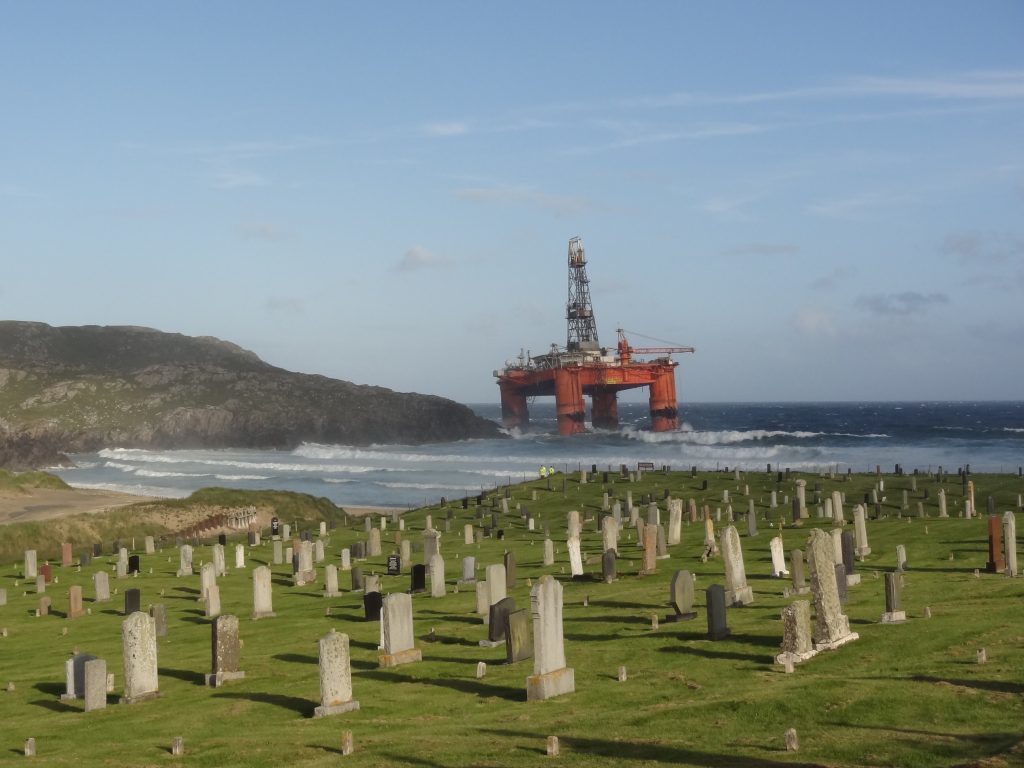
The boss of the largest offshore drilling contractor in the world claimed that “unbelievably” this has been a good year for Transocean.
In an armchair Q&A at Offshore Northern Seas, Jeremy Thigpen said the company had bagged some 40% of the contract fixtures offered this year by bidding below market rates.
Rather than being cutthroat with the Swiss-registered but still fundamentally American corporation, Thigpen described it as a response to the need for offshore Big Oil to drive down its costs.
He acknowledged that of course the oil companies were bent on crushing contractor margins but that, by becoming a lot more efficient than it had been, Transocean had, in effect, created margin for itself.
Thigpen said cost-cutting at Transocean was not over yet.
“We’re about three quarters through our cost-cutting process and we aim to complete by year-end (2016),” he told his audience. “It’s about what we can do process-wise to drive efficiencies.”
Thigpen said a prime example had been the slashing of off contract to stacking time for out-of-work rigs from the leisurely process that it had been . . . up to 70 days . . . to fewer than 14 days by applying more of a team mentality and simply getting a move on.
“This alone will help our margins despite prices coming down,” the former star American footballer said.
Thigpen said one reason why Transocean was enjoying a good year was the fact that its ultra-deepwater drilling experience was three times that of any competitor and that, by getting even smarter by the application of digitisation to drilling operations, that position would strengthen.
Turning to the fleet itself, he said the age profile was very important and one of the reasons why Transocean had led the charge for disposals of elderly rigs . . . 26 since early 2014 and still counting.
“We expect another 10 to go,” said Thigpen. “This is about high-grading the fleet.
“We weighted our rigs against the market. Inferior quality assets had to go. “
He said too that takeovers were on the cards and that, while most corporate mergers/acquisitions fail, in the drilling industry the real prize are the rigs themselves and the target company’s client track record.
“After all, we built the company (Transocean) through making acquisitions with real machines (rigs), real product lines and real customers.”
Thigpen pointed out that most rigs were built by a small number of yards and a limited cadre of OEMs (original equipment manufacturers). On paper, that meant that one rig is much like another in terms of characteristics.
What made the difference when all was said and done was the experience of the drilling crews, he claimed.
However, no mention was made of the fate of the large number of drilling personnel laid off by Transocean itself; possibly several thousand by now as more and more rigs ran out of contract and were stacked.
Nor did Thigpen refer to the grounding of the Transocean Winner on the West side of Lewis when discussing HSE.
The writer texted a question to the session moderator about the grounding, but it was claimed that no questions had been received from the audience, despite a call for them beforehand.
On the question of HSE and personnel, Thigpen said there was a critical linkage in that a portion of salaries paid by the company to rig crews hinged on safety performance.
He said huge emphasis was placed on training and that spending had gone up and not down as the fleet reduced.
Recommended for you
